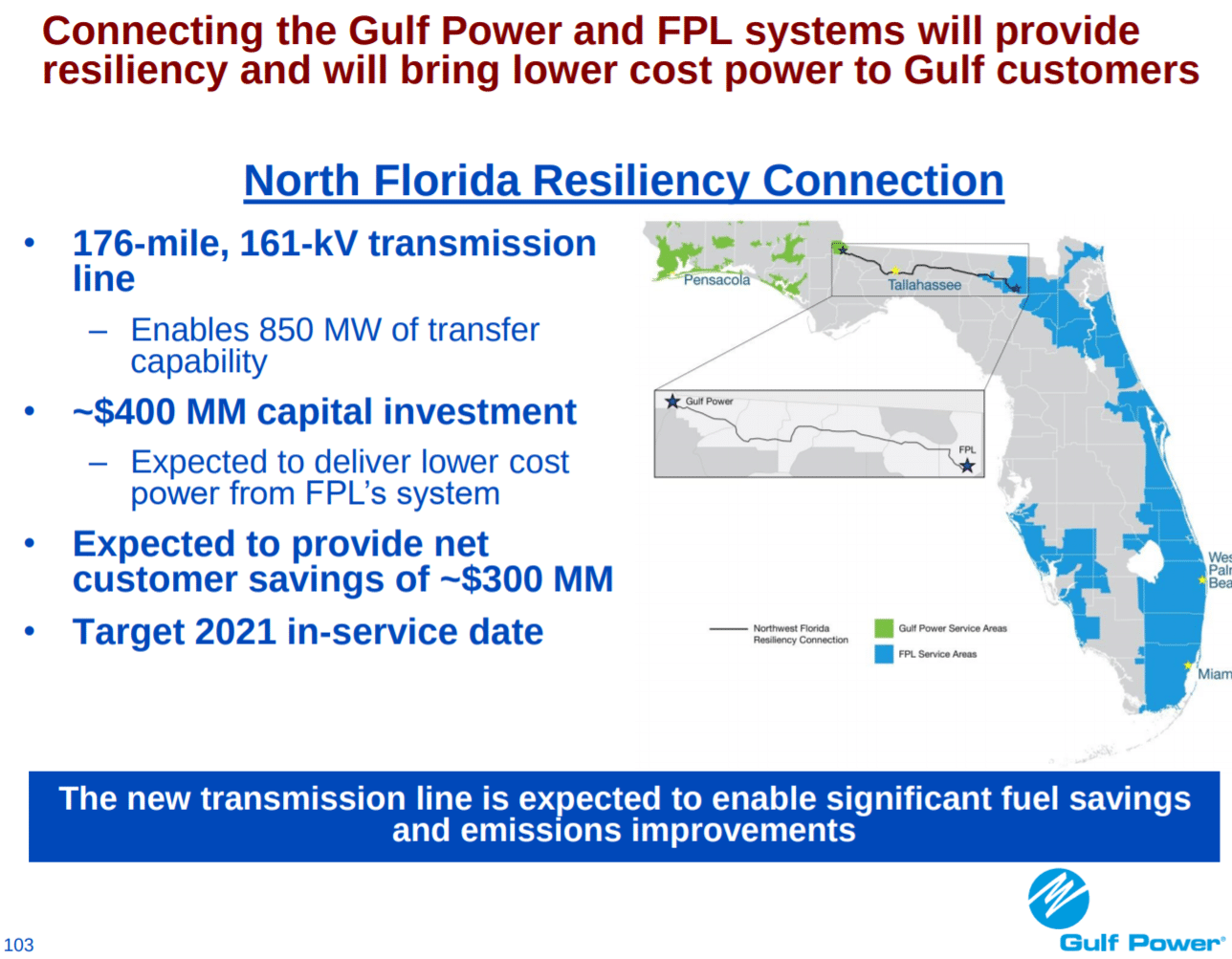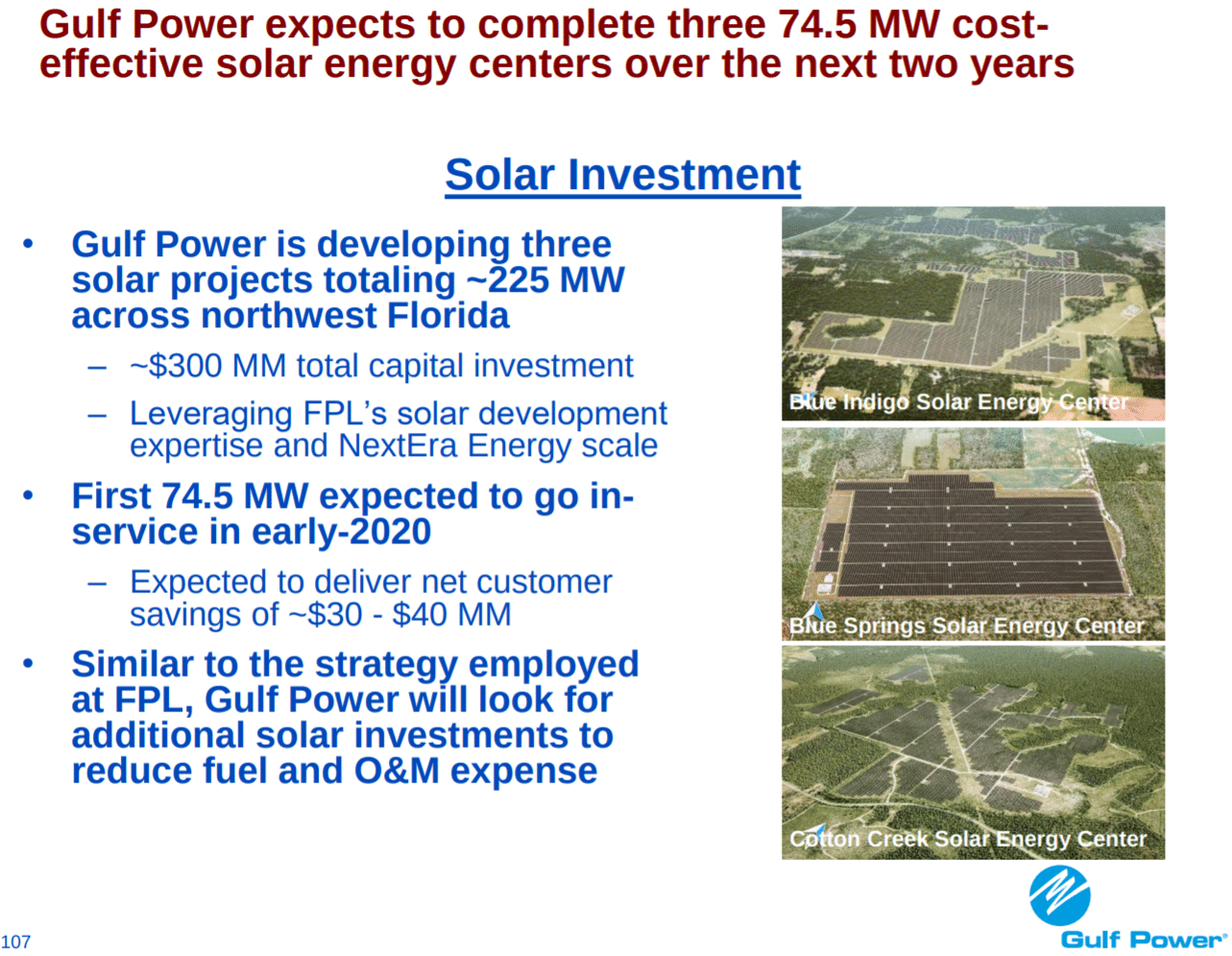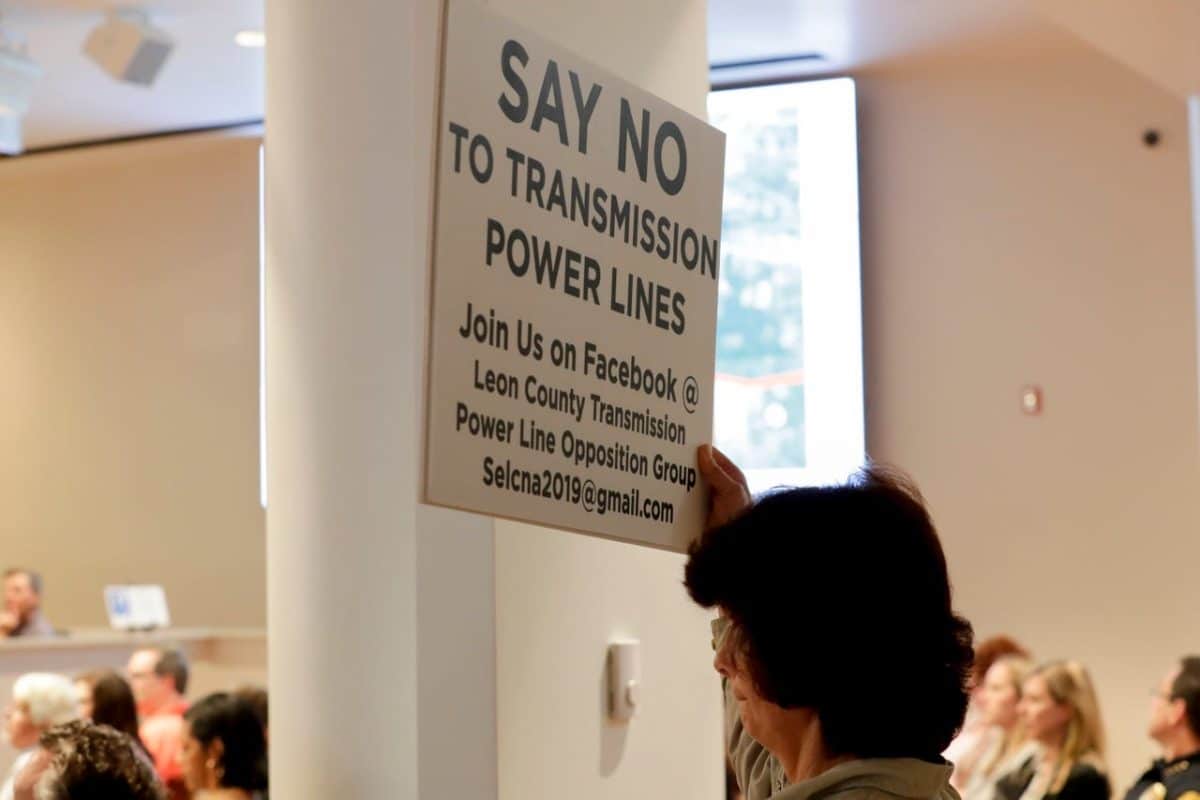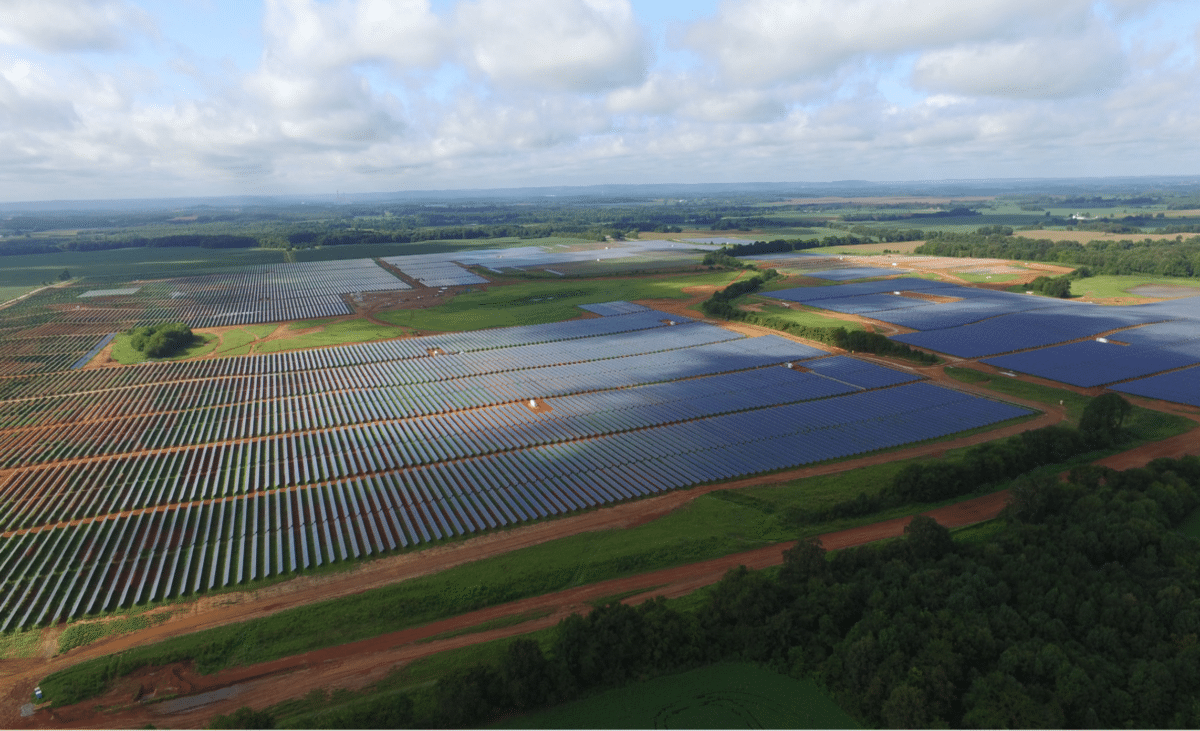NREL’s Seam Study suggests that a nationwide high voltage direct current (HVDC) network is about equal to a $40/ton carbon tax. Another piece of research looked at various mixes of wind and solar – but also saw a path toward a 100% solar+wind grid with lots of transmission and a dash of storage. Texas’ ERCOT HVAC power grid moves massive amounts of cheap wind, putting coal out of business, and now setting the stage for solar to do the same to gas. China looks to develop the world’s leading HVDC network to share its electricity nationwide.
So you’ve got my opinion on that topic…
Page 103 of NextEra’s 2019 Investor’s Presentation (below slide), the power company reveals its ongoing work to develop the North Florida Resiliency Connection, a $400 million, 176-mile/161-kilovolt transmission line. The line’s main value is that it will connect resources owned by Florida Power & Light (FPL) to those of Gulf Power – two Florida utilities owned by NextEra – lowering costs for both and increasing resiliency during hurricanes as it is a lower probability that these storms will affect both coasts of the state at the same time.

What a power line like this, plus other transmission upgrades, might also do is to allow these two Florida electric utilities to widen the longitude that they draw their solar generated electricity from. With this line, FPL can deliver early morning solar power west to Gulf Power to meet morning demand, and evening electricity east toward FPL territories as the evening ramp starts to build.
From the eastern most to western most points in the state, sunset/sunrise on June 21 was roughly 40 minutes apart, meaning the two regions would increase the solar generation window by 80 minutes – just over 5% of the length of a day. And with modern single axis stretching as far east and west as possible to increase the side of the solar power shoulders, we can expect every available photon to be grabbed.

With FPL planning to build 10 GWac of solar power by 2030, and – per NextEra in the above slide – “similar to the strategy employed at FPL, Gulf Power will look for additional solar investments to reduce fuel and O&M expense”, we should expect to see North Florida deploy massive amounts of solar power as well. And knowing that this company employs engineers that are absolutely forward looking when considering complimentary value increasing energy projects, and has a team within subsidiary NextEra Energy Resources that focuses on transmission – we should absolutely expect that NextEra did the math on this equation.
Getting the line built of course will be a challenge, as there are always those against powerlines it seems (below image from USA Today coverage of a recent city meeting regarding this powerline). However, earlier this month, the Tallahassee City Commission voted 4-0 to approve a Memorandum of Understanding (MOU) with Gulf Power on the transmission project. Tallahassee Reports, local press, noted that once negotiations are complete, the co-location agreement will be presented to the City Commission for final approval.

With this relatively small powerline offers in terms of resiliency and cost benefits, and what a bigger one connecting solar power plants strategically placed in extra east and western regions, could do for the state’s coming duck curve gives us a preview of coming discussions.
With California now contemplating how to get to 80% renewables, SEIA has already suggested they consider using transmission to import solar power from eastern regions – maybe this should be specifically done to knockout the morning portion of the duck curve. And with New York state projecting and New England starting to experience to early stages of their own curves, maybe these states should create procurement structures that bring solar from the west regions – and there are definitely groups pushing very hard for legislation exactly like this. And of course, Texas whose got a width of 660 miles and great powerlines will benefit from both early and late solar power.
Its coming, the market and our better senses will force it upon us.
This content is protected by copyright and may not be reused. If you want to cooperate with us and would like to reuse some of our content, please contact: editors@pv-magazine.com.








What it is , is another way to screw ratepayers by ratepayers paying for it but not getting ownership.
Plus as it makes no power, both utilities would be better off increasing local solar tracking generation.
For the duck I suggest east coast WTs that catch the heat driven sea breeze from noon until an hr after dark, covering the duck for less and getting generation the DC line won’t provide.
Nor is there any need for covering the duck as both utilities have too much capacity which will get much worse as loads like homes, buildings, become generators cutting out 50% of their demand in 12 yrs.
And both need to start burning waste biomass we have it coming out our ears here to over the duck, etc.
Just the downed trees from Irma, Michael would fuel them for 10 yrs.